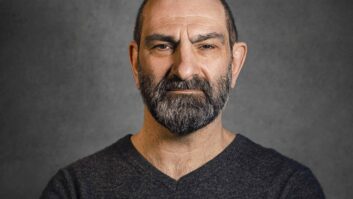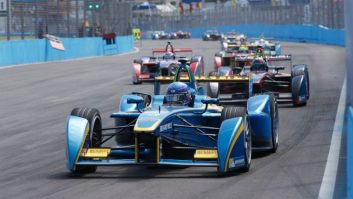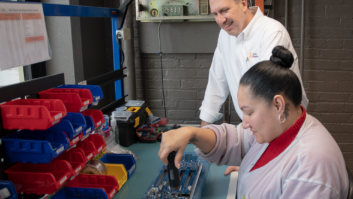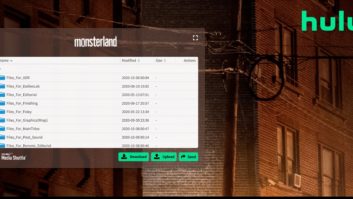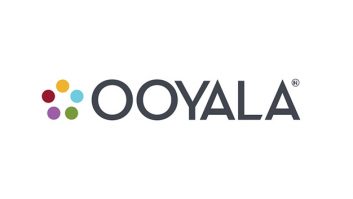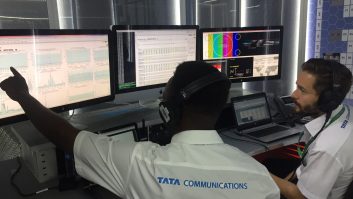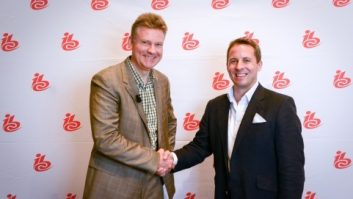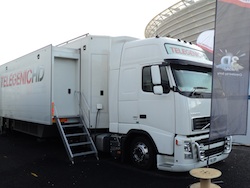
Telegenic started in 1980 when ex-BBC engineer Mike Spencer and cameraman Dave Barber, one of three cameramen behind the music video Bohemian Rhapsody for Queen in 1975, took ownership of a one inch tape deck and a Sony BVP 300 and started shooting various rock promos worldwide. They introduced their first OB vehicle a few years later, a Citroen car which travelled throughout the UK filming the BBC Money programme and covering many general elections.
They graduated to outfitting a Green Line coach for coverage of music shows all over Europe including Andy Williams and Julie Andrews Sound of Christmas in Austria for which the pair received an Emmy. All that, before building their first dedicated OB vehicle, a rigid-side 12 camera scanner dubbed T1 that recorded PAL, naturally, but also NTSC, showing the technological savvy with which the company has become renowned.
As the only UK-truck at the time capable of NTSC, it attracted the interest of US broadcasters including ABC, and CBS, a relationship that fed Telegenic regular work, such as live news inserts, for a number of years and led directly to CBS’s decision to task the firm with transporting T1 to assist coverage of the Winter Olympics from Nagano, in 1998.
“The aim is always to maintain up-to-date kit and the most cutting-edge truck design, rather than hold onto old equipment,” explains commercial manager Eamonn Curtin. “We’d rather sell on equipment and invest in the latest facilities.”
Telegenic sets off
In 2001 Curtin was an account manager at Sony where he made the first sale of an MVS 8000 HD switcher into the UK market for Telegenic’s new – and the UK’s first – HD ready vehicle (T8).
“Mike and Rocket [as Barber is known] instinctively knew they needed to future-proof their investment, but one consequence of that was that when Sky began looking into an HD service, Telegenic had the resource available to help them with early test transmissions.”
Though Telegenic conducted regular work for Sky including rugby league matches, the relationship was strengthened further when the broadcaster began investigating 3D. “Having visited lots of trade shows we could see the way that technology was running and we wanted to look at the possibility of 3D on our own,” says Curtin, who joined the company in 2002.
“We were asked by [production company] nineteen fifteen to shoot Keane from Abbey Road which became the world’s first live 3D transmission [on April 2 2009]. Independently of this and unknown to us until we got to the studios, Sky were there running 3D transmission tests for set top boxes. We got talking, and together we developed the world’s first 3D truck.”
T18 was followed by three further 3G/3D vehicles, two of which are owned by Sky and managed by Telegenic. When Sky 3D debuted in October 2010 with the Ryder Cup live from Celtic Manor, two of its 3D units and 14 rigs were there. In June 2010 it sent a 3D scanner to the FIFA World Cup Finals in South Africa hosting matches from Durban, Cape Town and Port Elizabeth for Host Broadcast Services.
Summer of sport
As Sky’s official 3D partner since 2009 it has covered well over 100 English Premier League matches but arguably 2012 was the company’s biggest year yet. Sky had covered the Isle of Wight Festival in 2011 with Telegenic, making it the first festival in the world to be aired live on a 3D TV service. Building on that, coverage was extended for 2012 to include 18 hours between June 22 to 24, in the process deploying 17 rigs – more than for any other live event in the UK to date.
Building on a relationship established with UEFA for the Euro 2010 championships, Telegenic was commissioned to supply facilities and technical crew to Euro 2012 Poland-Ukraine. Units T19 and T23, each armed with 40 Sony HDC-1500 cameras and eight HDC-3300R Super Slow Mos, travelled 2500km to stadia in Donetsk, in eastern Ukraine and Kharkiv, the country’s second largest city, to support UEFA’s host responsibility for Multilateral feeds.
They provided HD and 5.1 coverage of eight games, including the Semi Final between Portugal and Spain, all in 2D mode, switching to 3D for the final with 12 camera positions in Kiev’s Olympic Stadium.
Then there was the Olympics, for which Telegenic’s involvement couldn’t have been more high profile. Host broadcaster OBS tasked it with responsibility for supplying, preparing and engineering the live 3D broadcast of the Opening Ceremony.
It assembled six active 3D rigs and four Panasonic AG-3DP1s, two of them on RF link, all under the command of stereographer Peter Bowen and director Ted Ayling from T19. The left eye feed from a rig mounted on a technocrane was shared with the 2D broadcast.
It also recorded action from the Canoe Slalom competition at Lee Valley in 3D before returning to the Olympic Stadium to capture the athletic feats of Usain Bolt, Mo Farah, and Jessica Ennis in 3D. Four rigs were positioned on the central gondola in the stand, another at the end of the long jump run and two further rigs, including a Super-Slow-Motion camera, looking straight down the barrel of the 100 metres track.
All this, as well as manning trucks for host 2D coverage of Olympic Volleyball and soccer. Somewhere in the midst of all of that they pulled off a live BBC broadcast of the armed forces parade at Windsor Castle in front of the Queen as part of the Jubilee celebrations.
Company culture
While managers Terry James and Peter Bates had executed an MBO from the founders in 2006, the company remains privately owned, not yet seemingly threatened by SIS Live, Euromedia or NEP Visions.
“The whole ethos is about the crew and engineers,” says Curtin. “They are very loyal to Telegenic and the company is loyal to them. Many of our 90 permanent staff have been here longer than 10 years.
“The company is built heavily on the experience of our technical crew. We don’t tend to over equip ourselves with office, sales and marketing personnel. That means we can guarantee to resource trucks with vision and sound on-site, plus it gives us an agility to move quickly with regards to new technology. I believe that has kept us ahead of the game.”
When new truck investments cost in the order of £4-6 million, outside broadcasters need to have the vehicles on the road as much as possible so making the right technology call is essential. Its latest truck, being built by Sony, is outfitted with a 3G routing fabric and targeted at a new wave of Ultra-HD broadcasts which Curtin believes are just round the corner.
“We have just commissioned a new vehicle with all the necessary infrastructure to support 4K, which we believe will be a format for live cinema events and domestic TV once compression formats become more efficient,” he says. “We are in discussions with major manufacturers regarding the new 4K cameras and resulting signal flow, with a view to forming strategic partnerships.”
The company is now in a position where it can continue to facilitate their current contracts comfortably whilst still being able to offer high quality trucks to new clients due to the large fleet at their disposal. “Right now we are building for 2014,” says Curtin.
Along with its competitors, Telegenic is eyeing tenders for contracts for the Winter Olympics in Sochi, The Commonwealth Games in Glasgow, and Brazil where it hopes to be part of the HBS complement shooting 3D world cup matches.
By Adrian Pennington
